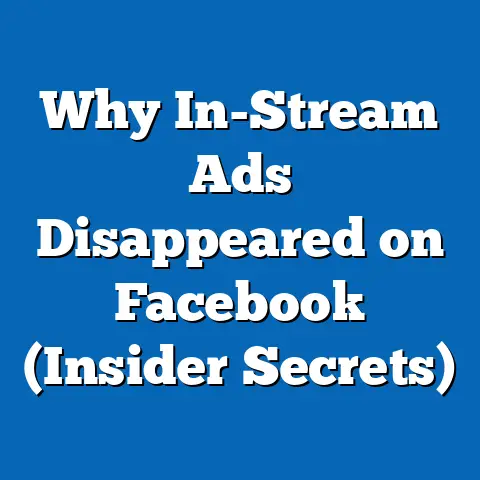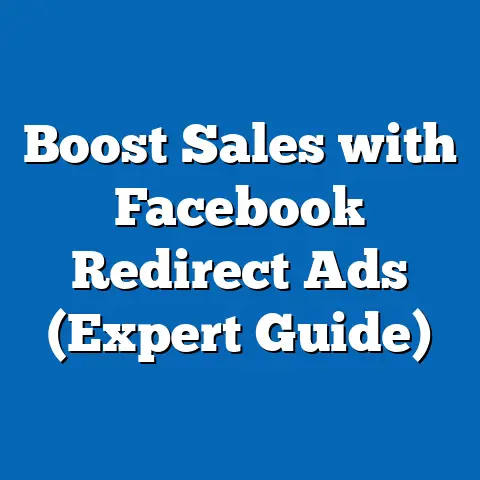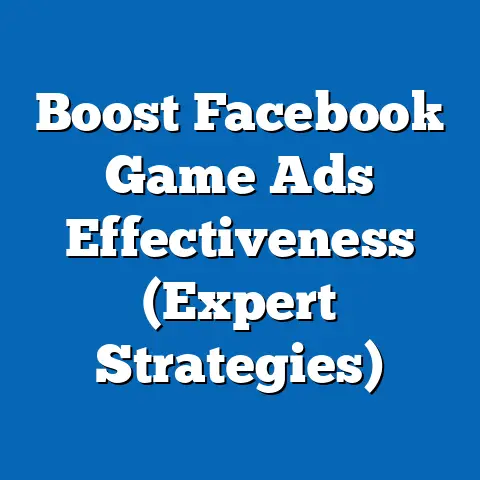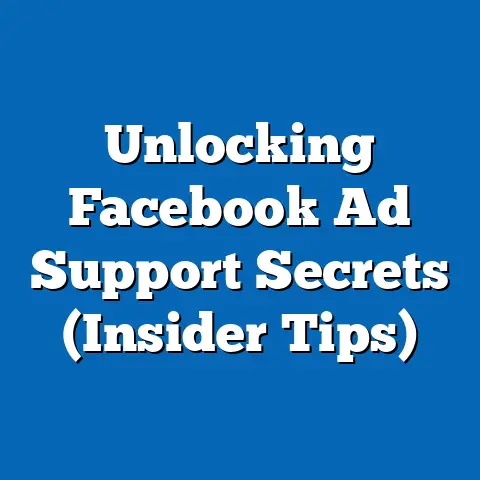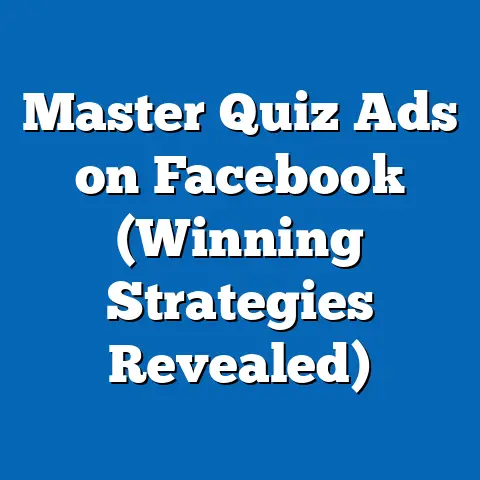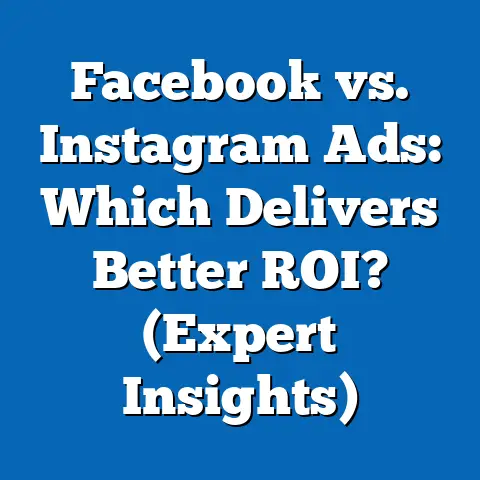Boost Reach with Facebook Video Ads (Engagement Secrets)
I’ve always been fascinated by how spaces can be completely transformed with the right flooring. Think about it – a rustic hardwood can bring warmth to a living room, while sleek tile can create a modern kitchen. It’s an art form, really, selecting the perfect materials, colors, and patterns to create a desired aesthetic. And just like transforming a room with flooring, crafting compelling Facebook video ads is an art of its own, a way to transform your brand’s visibility and impact.
In today’s digital landscape, video is king. But simply creating a video isn’t enough. You need to understand the nuances of Facebook’s algorithm, craft engaging content, and analyze your performance to truly boost your reach. In this guide, I’ll share my insights and secrets for creating Facebook video ads that not only capture attention but also drive meaningful engagement.
The Power of Video in Digital Marketing
Video isn’t just a trend; it’s the present and future of digital marketing. The numbers speak for themselves. According to a recent study by HubSpot, 81% of businesses use video as a marketing tool – a figure that’s been steadily climbing year after year. Why? Because it works.
Video ads have a significantly higher engagement rate compared to static images or text-based ads. Think about your own online behavior. Are you more likely to stop and watch a short, engaging video or scroll past a generic image? The answer is clear. Video allows you to convey emotions, tell stories, and create a deeper connection with your audience in a way that other formats simply can’t.
Facebook, in particular, has become a video-centric platform. With billions of active users, Facebook is a goldmine for reaching a massive audience. But with so much content vying for attention, you need to stand out. Facebook’s algorithm prioritizes video content that is engaging, relevant, and shareable. This means that if you create a compelling video ad, Facebook is more likely to show it to a wider audience, amplifying your reach and impact.
Takeaway: Video is no longer optional; it’s essential for effective digital marketing. Leverage the power of video on Facebook to connect with your audience and boost your brand’s visibility.
Understanding Facebook’s Algorithm
Ah, the ever-elusive Facebook algorithm. It’s a complex beast that marketers are constantly trying to understand and tame. While the exact workings of the algorithm are a closely guarded secret, we know some key factors that influence video reach.
- Watch Time: This is arguably the most important factor. Facebook rewards videos that keep viewers engaged for longer. The longer someone watches your video, the more likely Facebook is to show it to others.
- Engagement Rate: This includes likes, comments, shares, and saves. The more people interact with your video, the more Facebook sees it as valuable and engaging.
- Relevance Score: This score is based on how relevant your video is to your target audience. Facebook uses data like interests, demographics, and behavior to determine the relevance score.
- Video Completion Rate: How many people watch your video until the very end? A high completion rate signals to Facebook that your video is captivating and worth sharing.
The key takeaway here is that Facebook wants to show its users content they’ll enjoy. So, your goal is to create videos that are not only visually appealing but also informative, entertaining, or emotionally resonant. Think about creating content that encourages interaction. Ask questions, run polls, or encourage viewers to share their thoughts in the comments. The more interaction you generate, the more Facebook will amplify your reach.
Takeaway: To succeed on Facebook, you need to understand how the algorithm works and create content that aligns with its priorities. Focus on watch time, engagement, relevance, and video completion rate.
Crafting Engaging Video Ads
Now, let’s get down to the nitty-gritty of crafting video ads that grab attention and drive results. Here are some essential elements to keep in mind:
- Attention-Grabbing Hook: You have mere seconds to capture someone’s attention as they scroll through their Facebook feed. Start with a captivating visual, a thought-provoking question, or a surprising statement.
- Clear Messaging: What’s the main message you want to convey? Make sure it’s clear, concise, and easy to understand. Avoid jargon or technical terms that might confuse your audience.
- Strong Call-to-Action: What do you want viewers to do after watching your video? Visit your website? Sign up for a newsletter? Make a purchase? Make sure your call-to-action is clear and compelling.
- High-Quality Visuals and Audio: In the age of high-definition screens and crystal-clear audio, there’s no excuse for subpar quality. Invest in good equipment or hire a professional to ensure your video looks and sounds its best.
- Optimized Video Length: Shorter videos tend to perform better on social media platforms. Aim for a video length of 15-60 seconds to keep viewers engaged without losing their attention. Personally, I have found that videos under 30 seconds tend to perform best.
I remember working with a local bakery that wanted to promote their new line of pastries. We created a short video showcasing the pastries in a visually appealing way, set to upbeat music. The hook was a close-up shot of a pastry being drizzled with chocolate sauce. The messaging was simple: “Indulge in our delicious new pastries.” The call-to-action was “Visit our bakery today!” The video was only 20 seconds long, but it generated a significant increase in foot traffic to the bakery.
Takeaway: Crafting engaging video ads requires a blend of creativity and strategy. Focus on creating a strong hook, clear messaging, a compelling call-to-action, high-quality visuals and audio, and optimized video length.
Secrets to Maximizing Engagement
Creating a good video ad is just the first step. To truly maximize engagement, you need to employ some tried-and-true secrets.
- Storytelling: People love stories. Use your video to tell a compelling story that resonates with your audience. This could be a customer success story, a behind-the-scenes look at your business, or a fictional story that illustrates the benefits of your product or service.
- User-Generated Content: Incorporate user-generated content, such as customer reviews or testimonials, into your video ads. This builds trust and authenticity, as people are more likely to believe what other customers say about your brand.
- Audience Targeting and Segmentation: Don’t show the same video ad to everyone. Use Facebook’s targeting options to segment your audience based on demographics, interests, and behavior. This allows you to create personalized ad experiences that are more relevant and engaging.
- Interactive Elements: Utilize Facebook’s interactive features, such as polls, quizzes, and questions, to encourage viewers to participate and engage with your video ad.
- Subtitles: Always include subtitles in your video ads, as many people watch videos on mute, especially on mobile devices.
One of my most successful campaigns involved creating a series of video ads featuring real customers sharing their experiences with a fitness app. The ads were authentic, relatable, and showcased the positive impact the app had on people’s lives. The results were phenomenal, with a significant increase in app downloads and user engagement.
Takeaway: Maximize engagement by incorporating storytelling, user-generated content, audience targeting, interactive elements, and subtitles into your video ads.
Analyzing Performance and Adjusting Strategies
Creating and launching your video ad is not the end. You must continue to monitor and tweak for optimal performance.
Facebook Insights and other analytics tools are your best friends when it comes to tracking the performance of your video ads. Here are some key performance indicators (KPIs) to monitor:
- View Rate: The percentage of people who watched your video after seeing it in their feed.
- Engagement Rate: The percentage of people who interacted with your video (likes, comments, shares, saves).
- Conversion Rate: The percentage of people who took the desired action after watching your video (e.g., visiting your website, signing up for a newsletter, making a purchase).
- Cost Per View (CPV): The average cost you paid for each view of your video.
- Return on Ad Spend (ROAS): The amount of revenue you generated for every dollar you spent on your video ads.
By monitoring these KPIs, you can identify what’s working and what’s not. If your view rate is low, you might need to improve your hook. If your engagement rate is low, you might need to make your video more interactive or relatable. If your conversion rate is low, you might need to improve your call-to-action or landing page.
Don’t be afraid to experiment and try different things. A/B test different hooks, messaging, and calls-to-action to see what resonates best with your audience. The key is to continuously analyze your data and adjust your strategies accordingly to enhance reach and effectiveness.
Takeaway: Track the performance of your video ads using Facebook Insights and other analytics tools. Monitor key KPIs, interpret the data, and adjust your strategies accordingly to enhance reach and effectiveness.
Conclusion
Facebook video ads are a powerful tool for boosting reach and engaging audiences. However, success requires a blend of creativity and strategy. You need to understand the nuances of Facebook’s algorithm, craft engaging content, employ proven engagement secrets, and analyze your performance to continuously improve.
Just as selecting the right flooring can transform a space, crafting compelling video ads can transform your brand’s visibility and impact. So, embrace the artistry of video advertising, experiment with different approaches, and never stop learning. With the right strategy and execution, you can create Facebook video ads that not only capture attention but also drive meaningful results for your business.

